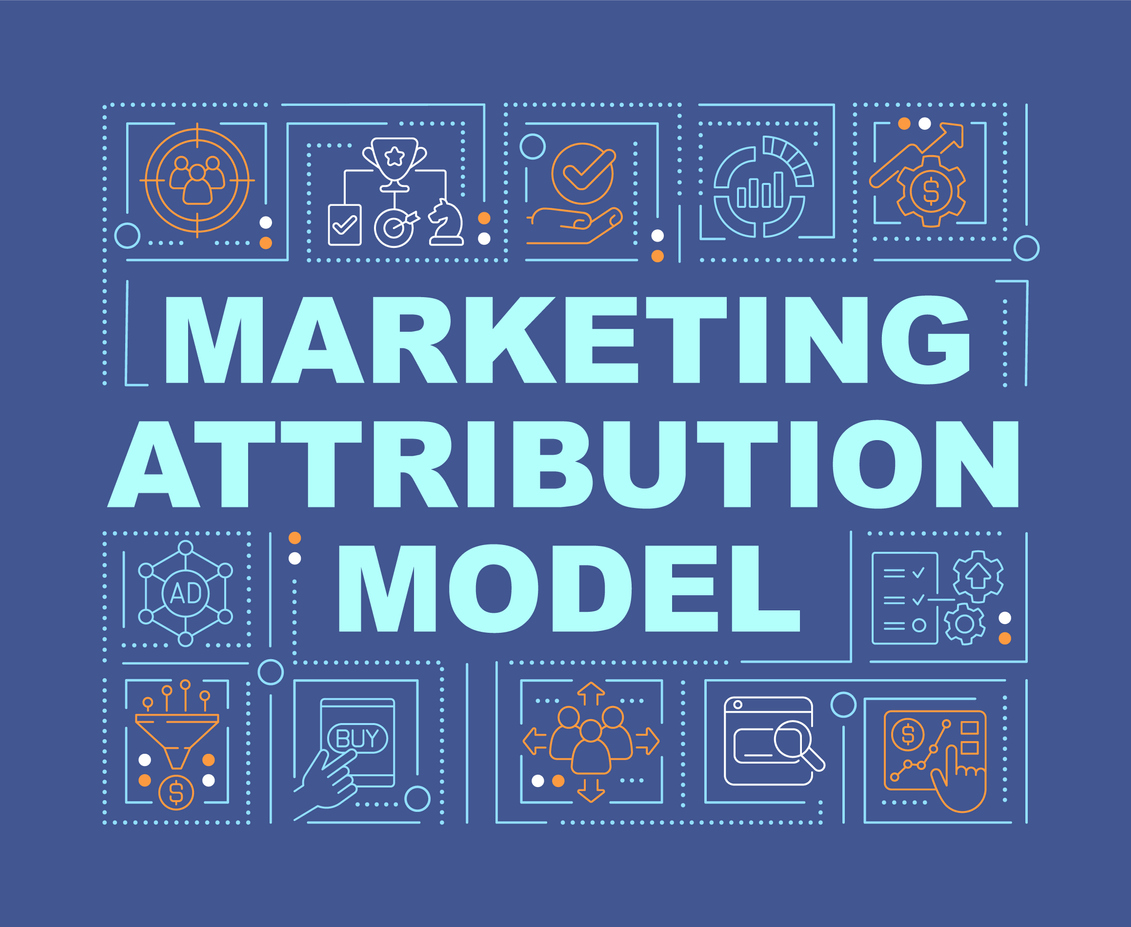As marketers, there is power in understanding where our results come from. Imagine a spider’s web. Each strand of the web is a touchpoint or marketing channel that leads to the middle, the conversion. We can only expect the web to capture prey if the strands are connected. Similarly, we must understand the journey leading to conversion to optimize our marketing efforts.
Our understanding of these journeys needs to be clarified. With the advent of digital marketing, we’re dealing with more than just one or two strands. We’re dealing with a multitude of strands, leading to multi-channel campaigns. It’s easy to be daunted by this complex web, but let’s face it head-on. The solution to this complexity lies in data and analytics.
What is Multi-Channel Marketing Attribution?
Imagine you’re an explorer charting a new territory. Every action you take, every decision you make, is based on the map you’ve drawn. That’s marketing attribution. It’s the compass pointing out which paths – lead you towards results.
Consider a business that only acknowledges the last leg of the journey, the last-touch attribution. It’s as if they’re ignoring the trek through the forest, crossing the river, and focusing solely on the last step that brought them to the treasure. But the treasure isn’t simply a result of that last step. It’s the culmination of the entire journey.
Think of your marketing as a symphony, where each channel is an instrument. The music isn’t simply about each note but rather how these notes work together to create a harmonious melody. That’s what marketing attribution does. It doesn’t merely focus on the lone violin but appreciates the entire orchestra, understanding how each instrument’s melody engages with your audience, driving them towards the grand finale – conversion.
Let’s consider attribution models as different vantage points, providing unique perspectives on the customer journey across your marketing funnel. These viewpoints empower you to make informed decisions about your marketing strategies at different stages of your customer’s journey.
What would it be if we were to boil down marketing attribution to its essence? It’s your map to understanding the impact of your marketing efforts. It’s your compass, leading you to valuable marketing channels. And above all, it’s your key to optimizing your ROI. It’s the tool that enables you to sail through the wide-open sea of marketing, steering you toward your destination – success.
Why Marketing Attribution is Important?
Imagine being the maestro of an orchestra, but the curtain never rises. You can hear the music, feel its energy, but you can’t see which instrument is playing which note. That’s the business landscape without marketing attribution – a symphony of efforts with an obscured view of their individual impacts.
In the digital arena where we now operate, marketing attribution becomes the curtain lift, revealing the instruments at play, and more importantly, their contributions to the final performance – the customer behavior and purchasing decisions.
Navigating this landscape without marketing attribution is akin to conducting that orchestra blindfolded. You’d need to include the vital insights that inform decision-making, strategy optimization, and efficient budget allocation – key to maximizing your return on investment.
The world of multi-channel attribution, however, is a complex symphony. The multitude of digital marketing channels and touchpoints resembles an orchestra that plays in different rhythms and pitches, making it challenging to keep track of every note. Customers engage in a non-linear dance, interacting with various channels along their journey, further orchestrating this complexity. Recognizing and navigating this intricate composition is integral to mastering multi-channel attribution and fine-tuning your marketing performance.
Understanding the categories of attribution is like understanding the sections of your orchestra. Single-touch models, like the first-click and last-click, put the spotlight on a solo performance – one touchpoint that takes all the credit for the conversion. On the other hand, multi-touch models spread the applause across several touchpoints in the customer’s journey, much like recognizing the contributions of the entire orchestra. Different models, like the sections of an orchestra, play distinct parts and are effective in their unique ways, depending on the tune of your marketing strategy.
Common marketing attribution is akin to a well-tuned instrument. It enables businesses to play the right notes, striking chords that resonate with their audience, amplifying engagement, conversions, and revenue. It enables them to identify the discordant notes – the less effective strategies – and adjust them to perfect their performance. In essence, marketing attribution allows you to create a harmonious symphony, optimizing the effectiveness of your marketing efforts by ensuring every dollar spent is a note well played.
Understanding Different Types of Marketing Attribution Models
Understanding marketing attribution is a critical step in gauging the effectiveness of business initiatives. However, comprehending the impact of individual marketing touchpoints can be challenging. As digital marketing and multi-channel campaigns rise in popularity, the complexity of accurate attribution increases. This complexity can be managed by employing different marketing attribution models such as multi-touch, last-click, and time decay.
When we talk about marketing attribution models, we refer to the rule or set of rules that determine how conversion credit is assigned to various touchpoints in conversion paths. Let’s explore some of the commonly used attribution models:
Last-Click Attribution: This is a widely used model, especially by businesses with shorter sales cycles. Last-click attribution awards all the credit to the customer’s final touchpoint before conversion. It benefits businesses focusing on immediate sales and conversions, but it undervalues the role of other touchpoints that might have influenced the buyer’s journey.
Multi-Touch Attribution Model: This model recognizes that customers interact with various marketing channels throughout their purchasing journey. In a multi-touch attribution model, credit is shared among all the touchpoints. This approach provides a more holistic view of your customer’s journey and is particularly valuable for businesses running multi-channel campaigns.
Time Decay Attribution: This model assigns more credit to the touchpoints that occurred closer to the conversion. This model is beneficial for businesses running short-term promotional campaigns, as it highlights the most effective channels in driving immediate conversions.
Choosing the right attribution model for your business can take time due to the diversity in the digital marketing landscape and differences in businesses’ goals. It’s important to recognize the strengths and limitations of each model to ensure it aligns with your business objectives.
Understanding the role of different models and when to implement them will greatly help in effectively analyzing your marketing efforts. As you understand your customer journey and conversion paths, you can adjust your model choice or combine multiple models to get a more accurate picture of your marketing performance.
For an optimized marketing strategy, leveraging data and analytics to get a clearer picture of customer engagement across all touchpoints is recommended. Digital analytics tools, such as Google Analytics, can aid in measuring marketing attribution, providing useful insights to optimize your marketing campaigns further.
In conclusion, understanding and implementing the right marketing attribution model is essential to measure your marketing efforts’ effectiveness and improve ROI accurately. Whether it’s a last-click attribution, multi-touch attribution, or time decay model, each provides a unique perspective on the impact of your marketing efforts and can guide you in refining your overall marketing strategy.
Which Type of Attribution Model to Use?
Choosing the right type of attribution model is crucial to ensure accurate measurement of the impact of touchpoints on customer journeys. Here are some common types of attribution models:
First-touch attribution: This model credits a customer’s first interaction with your efforts. It works well for businesses that rely on creating brand awareness and generating leads through advertising.
Last-touch attribution: This model credits a customer’s last interaction with your efforts before converting. It suits businesses with short sales cycles and those focusing on direct response marketing.
Linear attribution: This model distributes credit equally among all touchpoints that lead to a conversion. It works well for businesses with long sales cycles and multiple touchpoints across the customer journey.
Position-based attribution: This model gives credit to specific touchpoints that occur at the beginning and end of the customer journey and in the middle. It suits businesses with valuable touchpoints that significantly impact the customer journey.
Time decay attribution: This model gives more credit to touchpoints closer to the conversion point. It works well for businesses with short sales cycles and where the customer journey is brief.
Choosing the right attribution model depends on your marketing goals, the type of tactics you use, and your overall marketing mix. Custom attribution models can also be developed based on your specific needs and the insights you gain from your marketing attribution.
The Challenges of Multi-Channel Attribution and How to Overcome Them
While multi-channel attribution offers valuable insights into how different touchpoints influence customer behavior, it also presents several challenges. One of the biggest challenges is accurately attributing efforts to specific channels.
Another challenge is determining which attribution model to use. There are various attribution models available, each with its strengths and weaknesses. For example, the first-touch attribution model gives all credit to the first interaction a customer has with your brand. In contrast, the last-touch attribution model credits the final interaction before a conversion.
To overcome these challenges, marketers need to use attribution in conjunction with other sources of information, such as customer journey data and analytics platform data. By understanding how customers engage with your marketing across various channels and touchpoints, you can make more informed decisions about your marketing mix and allocate your budget accordingly. Additionally, custom and advanced attribution models like u-shaped attribution and time decay attribution can provide a more accurate view of marketing performance and help you make data-driven decisions about your marketing strategies.
How to Choose the Right Attribution Model
When choosing an attribution model, it’s important to consider your marketing goals, the customer journey, and the complexity of your marketing mix. Here are some popular attribution models to consider:
First-Touch Attribution Model: This model attributes all credit to the first marketing touchpoint that introduced the customer to your brand. This model is useful for measuring brand awareness and lead generation.
Last-Touch Attribution Model: This model gives all credit to the last marketing touchpoint before the customer converted. This model is useful for measuring sales and revenue.
Linear Attribution Model: This model assigns equal credit to every marketing touchpoint across the customer journey. This model is useful for understanding the role of each marketing touchpoint in the customer journey.
Position-Based Attribution Model: This model gives the most credit to the first and last marketing touchpoints, with the remaining credit divided equally among the touchpoints in between. This model is useful for measuring both lead generation and sales.
Time Decay Attribution Model: This model gives the most credit to the marketing touchpoints closest in time to the conversion, with the remaining credit divided among the touchpoints that came before. This model is useful for understanding the role of each marketing touchpoint in the customer journey.
U-Shaped Attribution Model: This model gives more credit to the first and last touchpoints, with the remaining credit divided equally among the touchpoints. However, it gives more weight to the touchpoints in the middle of the funnel, which are often critical to converting leads into customers.
There is no one-size-fits-all attribution model, and businesses may need to use a combination of models or create a custom attribution model that fits their unique needs. Ultimately, the goal of attribution is to gain insights into how marketing activities contribute to business goals, and businesses should use attribution data to make informed decisions about their tactics and budget allocation.
What about Google Analytics?
Google Analytics is a widely-used analytics platform that provides valuable insights into how your marketing efforts are performing. It allows you to track user behavior on your website, measure your tactics’ success, and better understand how customers engage with your brand.
Google Analytics provides a range of attribution models, including last-click, first-click, linear, time decay, and position-based. Each model offers a different view of your marketing performance, allowing you to make data-driven decisions about your marketing budget and channels.
It’s important to understand how attribution data is collected and analyzed to make the most of Google Analytics. You can use this information to optimize your marketing campaigns, engage with your audience, and identify valuable marketing channels.
Overall, Google Analytics is a powerful tool for measuring marketing ROI and making informed decisions about your marketing mix. Using it with your attribution model lets you comprehensively view your marketing performance and make data-driven decisions to achieve your marketing goals.
5 Ways to Optimize
- Define your customer journey: Mapping out your journey and identifying the key touchpoints along the way is crucial for accurate attribution. Understand how customers interact with your brand across channels to get a complete view of your marketing performance.
- Choose the right attribution model for your goals: Different attribution models assign credit to marketing touchpoints. Choose the model that best aligns with your marketing objectives and goals. Consider multi-touch attribution, position-based attribution, last-touch attribution, first-touch attribution, and u-shaped attribution.
- Use a custom attribution model: A custom attribution model may be necessary to accurately attribute specific tactics’ impact. You can use your attribution data to create a custom model that reflects your marketing mix and goals.
- Measure marketing ROI across the funnel: Attribution helps you understand how marketing efforts impact the customer journey. Use attribution data to measure ROI across the marketing funnel, from awareness to conversion.
- Continuously monitor and refine your attribution model: Marketing attribution is ongoing. Monitor your attribution model to ensure accuracy and make data-driven decisions about your marketing activities. Use marketing analytics tools to gain insights into marketing channels’ performance and optimize your marketing spend accordingly.
How to Measure Marketing Attribution with Wizaly
How to Measure Marketing Attribution with Wizaly
In the dynamic and ever-evolving digital landscape, accurately measuring marketing attribution is crucial to optimizing marketing efforts and driving business growth. Implementing a powerful marketing attribution software like Wizaly can greatly enhance this process. Wizaly, a robust solution for marketing attribution, harnesses the power of the multi-touch attribution model and marketing mix modeling to provide businesses with deep insights into their marketing performance.
Understanding Marketing Attribution with Wizaly
It is first important to comprehend what marketing attribution gives to get started with multi-channel attribution. Marketing attribution essentially offers a comprehensive understanding of the contribution of each marketing touchpoint in the customer journey leading to a conversion. This is where Wizaly steps in. As a marketing attribution software, Wizaly accurately calculates the effectiveness of all online and offline marketing efforts and assigns credit to different marketing channels and touchpoints involved in a customer’s journey.
Implementing Multi-Touch Attribution Model with Wizaly
The multi-touch attribution model is a sophisticated approach that assigns credit to multiple touchpoints along the customer journey. Wizaly uses this model to provide a more accurate representation of the customer journey. By acknowledging all touchpoints a customer interacts with before making a purchase, this model offers a more holistic view of a customer’s interaction with your brand.
Leveraging Marketing Mix Modeling with Wizaly
Marketing mix modeling is a statistical analysis technique used to estimate the impact of various marketing tactics on sales and forecast the impact of future tactics. Wizaly’s platform incorporates marketing mix modeling to help businesses understand the effectiveness of their marketing strategies across different channels. This aids in improving marketing decisions by identifying which marketing channels deliver the best ROI.
Starting with Multi-Channel Attribution with Wizaly
Multi-channel attribution can seem daunting initially, but Wizaly simplifies this process. The software maps out the entire customer journey across various channels, crediting each channel based on its influence on the final conversion. This level of attribution allows businesses to understand each channel’s role and how they interact with each other to influence customer behavior. By recognizing each channel’s value to a conversion, businesses can optimize their marketing strategies and budgets for better results.
Conclusion
Selecting the right attribution model is akin to choosing the correct strategy in chess. Pairing this with powerful digital tools like Google Analytics, you can delve into the performance of your marketing channels and touchpoints throughout your customers’ journey, akin to analyzing each chess piece’s role and movement across the board.
Navigating the labyrinth of multi-channel attribution can be as complex as predicting your opponent’s moves in a chess match. Hurdles such as fragmented data and intricacies of various channels can throw you off your game, yet overcoming these obstacles is essential for accurately attributing the victory to the right tactics.
Armed with accurate attribution data, you can make calculated decisions about allocating your marketing budget, like a chess player who can strategically position his pieces for maximum impact. You can focus your energy and resources on the most potent channels; the power moves that yield the most advantage.
In the grand scheme, marketing attribution is not just about scoring points or winning matches. It’s about engaging in a dialogue with your customers, understanding their moves, predicting their needs, and ultimately, driving a narrative that leads to mutual success. After all, isn’t that what marketing – and, indeed, chess – is all about?
If you are ready to take your data to the next level, schedule a demo with Wizaly today!



